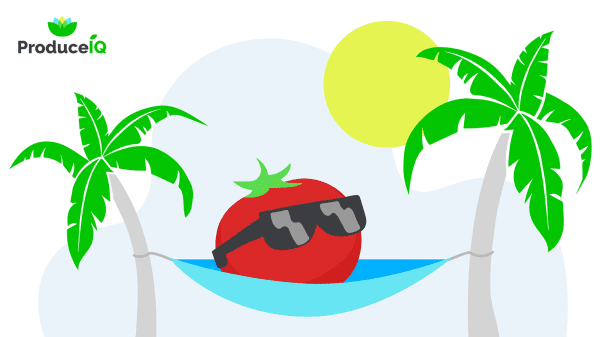Overall prices are slightly higher three weeks in a row. Yet, values remain low compared to historical norms.
Demand varies by region depending on the level of foodservice restrictions. The high level of activity in my hometown of North Palm Beach, FL, is a direct indication that New York is struggling.
Migrating south for warmer weather and fewer COVID-related restrictions is creating a busy winter season in South Florida. South Florida welcomes you.
Despite a few silver linings, the adversity faced by the overall foodservice industry is dramatic and is the primary driver for our low produce prices.
ProduceIQ Index: $0.90 /pound, +1.1 percent over prior week
(Week #53, ending January 1st)
Blue Book has teamed with ProduceIQ BB #:368175 to bring the ProduceIQ Index to its readers. The index provides a produce industry price benchmark using 40 top commodities to provide data for decision making.
According to the National Restaurant Association, 110,000 restaurants nationwide have closed permanently, which equates to one-sixth of the 660,000 restaurants. And, in the hardest hit states such as New York and Illinois, 90 percent of remaining restaurants report sales declines that average 36 percent lower than norms.
Though takeout-centric restaurants are experiencing year-over-year increases, the decline of in-store dining dominates overall sales.
As a quick technical note for our readers that appreciate the details, we converted the calculation of our Index’s week numbers from the U.S. to the international (ISO) standard. This will improve the comparability of weeks to prior years. 2020 is one of those rare years with 53 weeks, which doesn’t happen again until 2026.
Ignoring the overall malaise, a few produce commodities experienced significant price gains. The leaders were asparagus and tomatoes, each rising 41 and 27 percent respectively.
Though increasing demand helped achieve this level of price gains, these items are all supply constrained. Mexican asparagus had a transition in harvesting regions from Baja California to Caborca, though quality is good and supply still available from both Mexico and Peru.
As the 6th and final price spike of 2020, asparagus (11 pound) rises to $20+ range as an encouraging year end note for importers.
Tomatoes (rounds) have been slow to harvest in Florida due to cooler weather and demand from retail is strong. Supply from Mexico should accelerate after harvesting labor returns from holiday in force. Markets are active and moving volume.
Tomato (25 pound) prices rise to attractive levels for growers and market demand is moving volume through holidays.
Based on reader feedback, we’ll lean our analysis towards a price/package vs. a price/pound approach. Each has a place.
We developed a free tool, named “Trends,” for your own analysis of prices. Trends allows you to graph USDA price data with ease. Slice, dice and visualize to your taste. Check it out here and provide us feedback. We’re listening!
We’re grateful for this time of celebration and proud to serve an industry that is focused on our health. Happy New Year!
ProduceIQ Index
The ProduceIQ Index is the fresh produce industry’s only shipping point price index. It represents the industry-wide price per pound at the location of packing for domestic produce, and at the port of U.S. entry for imported produce.
produceiq.com
ProduceIQ uses 40 top commodities to represent the industry. The Index weights each commodity dynamically, by season, as a function of the weekly 5-year rolling average Sales. Sales are calculated using the USDA’s Agricultural Marketing Service for movement and price data. The Index serves as a fair benchmark for industry price performance.





